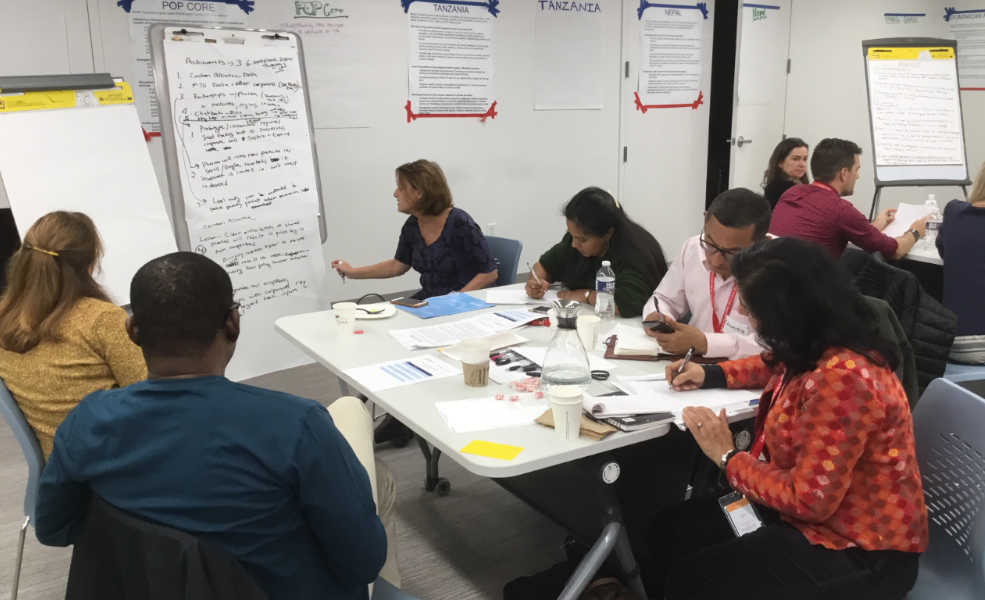Planning for the end-of-project year
 Integration of the Collaborative, Learning and Adapting practices into USAID’s program cycle makes development efforts more efficient. An important part of the CLA framework that focuses on learning and adapting—indeed a key component of knowledge management—has to do with the distillation of information so that those who could benefit from the lessons can access them. This is not a simple task. The ways to go about it could be as varied as the programs themselves, because knowledge is generated from its own distinct context.
Integration of the Collaborative, Learning and Adapting practices into USAID’s program cycle makes development efforts more efficient. An important part of the CLA framework that focuses on learning and adapting—indeed a key component of knowledge management—has to do with the distillation of information so that those who could benefit from the lessons can access them. This is not a simple task. The ways to go about it could be as varied as the programs themselves, because knowledge is generated from its own distinct context.
In the final year of SHOPS Plus, we used an approach to arrive at key themes for our last year. We will use the themes as a framework to organize our learning across the project. The steps below are not, of course, the only way to organize learnings, and they are a work in progress. We will know how well the framework holds up once we get further into programming our events. What follows is a behind-the-scenes look at how our project got ready for the whirlwind of its last year.
Our roadmap to developing an end-of-project framework
To set the stage, consider our project in numbers. We are the flagship project in private sector health out of USAID’s Office of Population and Reproductive Health, six years in the making come September 2021. Our expertise covers four health areas (family planning, maternal and child health, HIV, and tuberculosis). We use strategic approaches in 10 technical areas and three cross-cutting areas, and operate out of nine project offices. The objective of the project is to increase access to and use of priority health products, services, and information through the private sector. As a global project, we have a mandate to advance knowledge and disseminate it to international audiences including USAID missions, country partners, donors, and private sector stakeholders.
Pretty ambitious, no?
From a knowledge management perspective, our challenge was to pull the lessons learned over the previous five years into a framework, so others could more readily access (and benefit from) them. Would we go by intermediate results set out in the cooperative agreement? That structure works for contracts but not really for learning. Would we go by our 13 technical and cross-cutting areas? That sounds hard for the human mind to grasp in addition to being an unlucky number. Would we organize by health area? That means we compartmentalize rather than find commonalities across health areas. How would we present what we learned in an accessible way? How would we distill our knowledge into a few themes?

First, we started by reviewing the strategic roadmap drawn up by the technical leads and consortium partners at the beginning of the project in 2015. The roadmap was the product of a two-day workshop in which our team envisioned what success would look like in five years and outlined how to get there. The roadmap had six strategies, which helped organize our wide-ranging activities into a manageable structure. We used the strategies as an internal guide over the course of the project, periodically checking to see where we were along the route in terms of short- and long-term goals.
Second, at the beginning of the fifth year of the project, we conducted a workshop to pause and reflect. Our idea was to come up with themes for the end of our project by looking at the roadmap and our results and lessons learned so far. By this time, the project had produced 60 publications, published 200 stories on the website, and delivered more than 50 technical presentations. Through a facilitated process our technical leads, consortium partners, and the chiefs-of-party from the project offices sifted through the experiences of their programs to analyze what worked best in which situations and discern commonalities. This resulted in several main takeaways. Reviewing our strategies and the main takeaways, we developed themes to use for our end-of-project events and products.
Third, almost a year later, we did a final pulse check. How did our themes dovetail with the body of knowledge accumulated and USAID’s strategies? As a global project we are charged with delivering results and showing the path toward USAID goals such as private sector engagement and the journey to self-reliance. Using that lens, what was important to highlight? This was a crucial step. With an understanding of our how our project’s goals contributed to USAID’s strategies, and everything we had learned along the way, we built a framework for our final year along five themes: quality of care, health markets, public-private engagement, data to strengthen private sector engagement, and health financing.
These themes are the foundation for our dissemination activities. We started our final year with a webinar on quality of care with SIFPO2 hosted by IBP Network on October 1. Our plan includes webinars, an e-conference, a publication series called Accelerating Private Sector Engagement, and more. Each knowledge product (whether a presentation, PDF, or video) is designed to be accessible, sharable, and applicable, depending on the country context. Taking time to develop the five themes gave us a way to organize, synthesize, and package our work. There is much more to come this year as we share the rich lessons and best practices from our project.